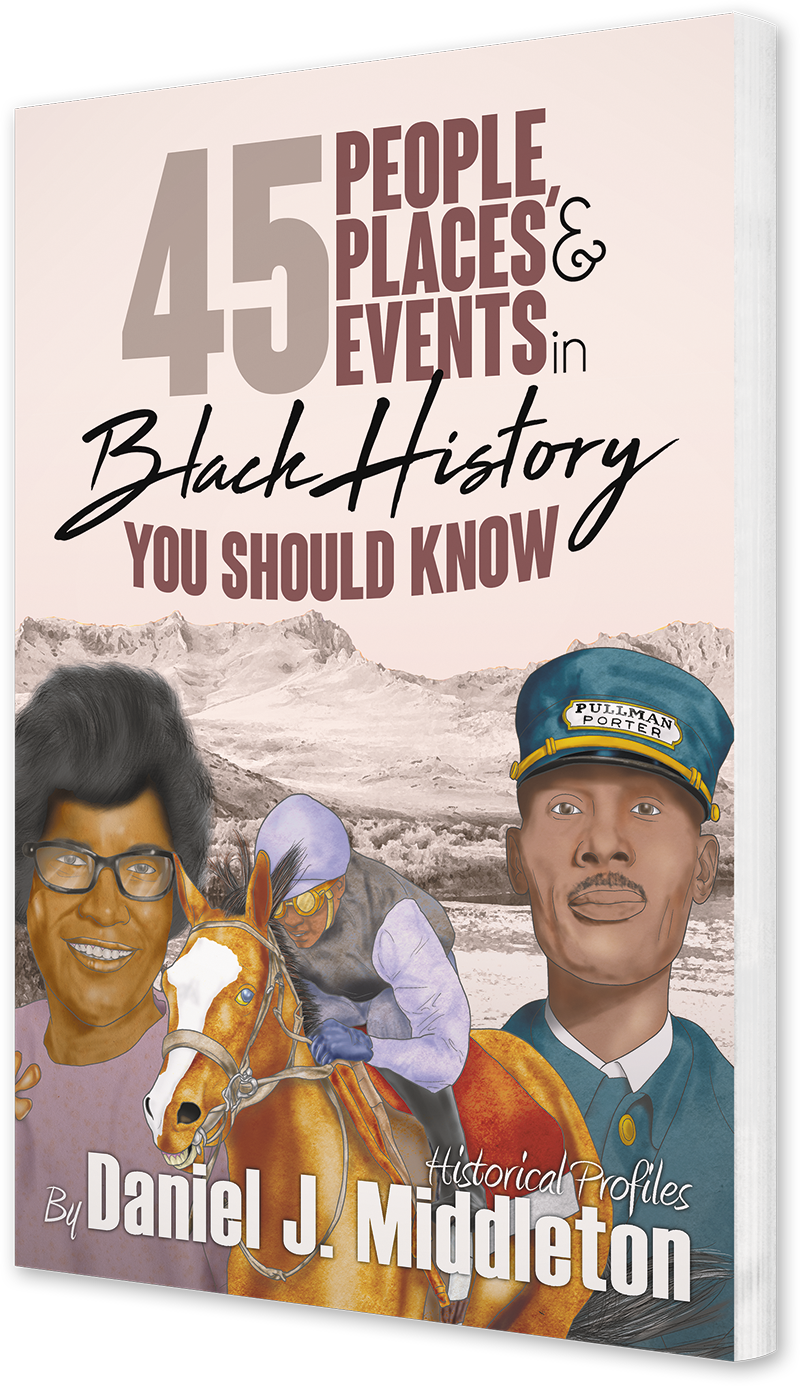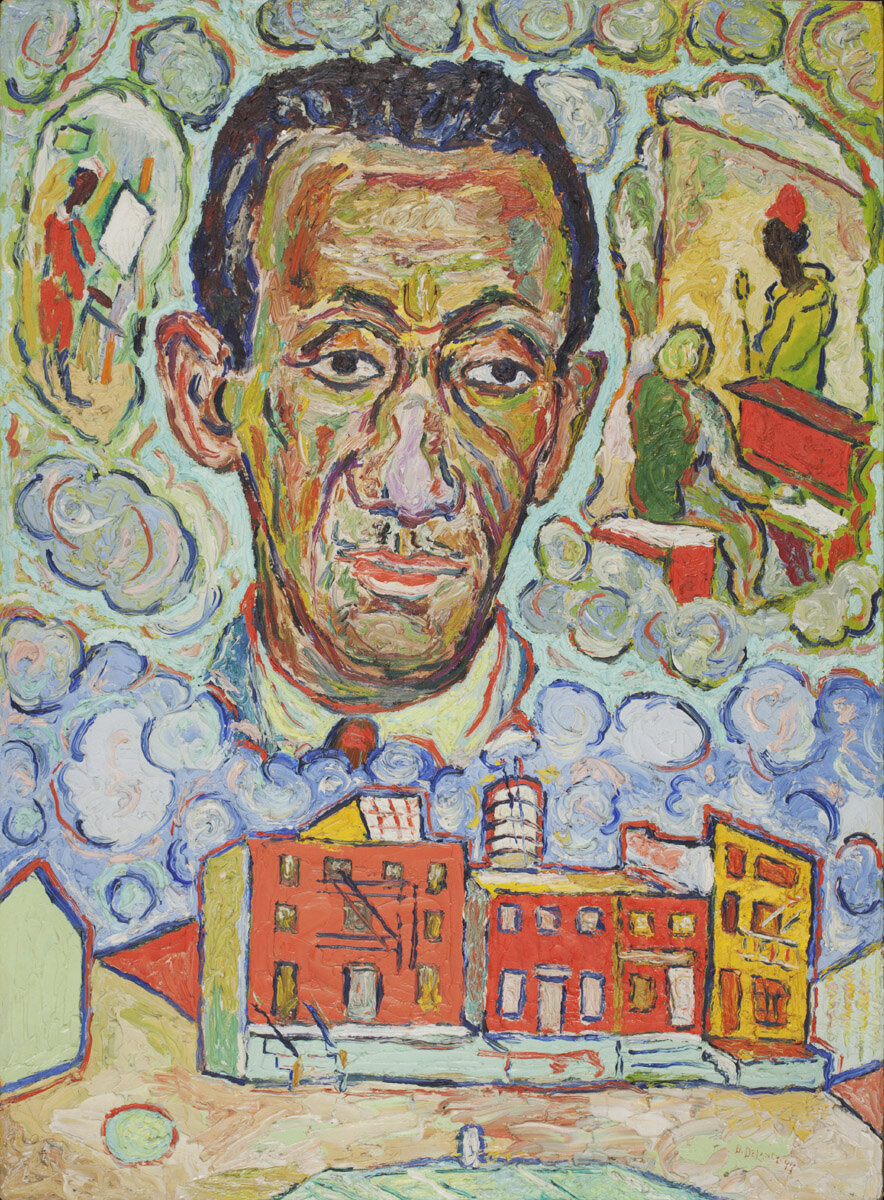Beauford Delaney
Modernist Painter of the Harlem Renaissance
Beauford Delaney at work in his artist’s studio in Paris in the 1960s. Photo courtesy of the Michael Rosenfeld Gallery.
In the 1900s, around the quarter-century mark, black intellectuals and artists centered in Harlem engaged in a cultural and creative movement that attracted the world’s brightest black talents. It was called the Harlem Renaissance. The year the stock market crashed, a black modernist painter who trained in Boston, Massachusetts and Knoxville, Tennessee, relocated to New York when the power and energy of the Harlem Renaissance proved too strong a draw. His name was Beauford Delaney, and his colorful, expressive paintings presented prominent black figures and New York street life in a vibrant style. Though he spent much of his career in relative obscurity, he is now considered a twentieth-century black artist of importance.
Beauford Delaney was born the eighth of ten children in Knoxville, Tennessee, on December 30, 1901. Due to inherited poverty, he was only one of four children among his siblings to survive into adulthood. His father was a barber and Methodist preacher named Samuel, and his mother was an illiterate former slave named Delia, who became a housekeeper for affluent white families in town. In light of their prominent roles in the local church, both were highly regarded members of the black community in Knoxville.
Self-portrait of Joseph Delaney.
Beauford’s mother, who was also a seamstress, was the one who encouraged him and his brother Joseph to foster their artistic talents. A strict, religious upbringing meant that Beauford had an active involvement in the church. Consequently, his early art mirrored the images on Sunday school cards and those found in bibles used by the family. Beauford’s first commission came in his early teens, and the painting earned him a small amount of recognition.
Beauford later found work at the Post Sign Company, where he assisted in painting signposts before being trusted to create his own designs. His work gained the attention of the most successful artist in Knoxville, an aging impressionist painter named Enoch Lloyd Branson, who primarily depicted early East Tennessee history and Southern politicians. Branson, a white Southerner, saw promise in Beauford’s sketches. He decided to take the young artist under his wing in the early 1920s. After taking Beauford as far as he could, Branson made arrangements to send Beauford north to continue his art studies. In 1924, Beauford enrolled at a school in Boston, Massachusetts, entering the city with letters of introduction.
Before long, Beauford was rubbing shoulders with Boston’s elite black activists, among them towering figures such as James Weldon Johnson, the poet, novelist and civil rights leader; Butler Roland Wilson, the trailblazing attorney and humanitarian; and William Monroe Trotter, the real estate businessman and newspaper editor. But Beauford’s primary reason for being in Boston is the thing that fascinated him most: art. When not in class or working at one of his intermittent jobs, he spent his days immersing himself in art history. Beauford often visited the Isabella Stewart Gardner Museum and galleries at the Boston Museum of Fine Arts, with impressionist painters commanding most of his attention.
Beauford studied art in Boston from 1924 to 1929. He attended institutions such as the South Boston School of Art, Massachusetts Normal Art School, and the Copley Society, which offered evening classes. He found himself in New York after the stock market crashed, with the Great Depression closing in. But Beauford’s time in New York contrasted its effects. He landed menial jobs and furthered his studies by attending the Art Students League. There he received instruction from Thomas Hart Benton and John French Sloan, the premier artist of the Ashcan movement. Beauford delighted in Harlem’s art scene and became part of the Harlem Renaissance in the 1930s.
“He found himself in New York after the stock market crashed, with the Great Depression closing in.”
To promote his art, he created sketches of New York’s elite citizens, and their positive reception led to Beauford working as a sketch artist at a Midtown dancing school owned by choreographer Billy Pierce. There, he painted professional dancers. Beauford was granted his first solo art exhibition in 1930 at the 135th Street branch of the New York Public Library, which featured five drawings created in pastels and ten drawings created in charcoal. His first major exhibition took place the same year when three of his portraits appeared in a group show at the Whitney Studio Galleries (now the Whitney Museum of American Art).
Portrait of Gaylord, a 1944 painting by Beauford Delaney. Oil on canvas mounted on artist board. Beauford Delaney enjoyed the company of famous writers and artists while he lived in New York. Many of them were subjects of his art. Some portraits featured talents that are unknown to the public today, such as this musician named Gaylord. Historians believe he was a pianist at a club frequented by Beauford, and one of his hands was missing two fingers.
Beauford realized more art opportunities when he secured a part-time teaching position at a school in Greenwich Village. In time, he drifted downtown to the bohemian confines of Greenwich and set up a studio there. Beauford’s creative output continued, as did his exhibitions, and he produced paintings of jazz musicians, socialites, urban landscapes, and street scenes featuring the poor of the city. His pieces were vibrant, with lively bursts of color that accentuated the subtle abstraction. While the work did not bring wealth or fame, it attracted an eclectic mix of acquaintances and friends. Among them were American writer Henry Miller, novelist and playwright William Saroyan, essayist Anaïs Nin, photographer Carl Van Vechten, and artists Alfred Stieglitz and Georgia O’Keefe.
Notable among his friends was writer and activist James Baldwin, who initially looked to Beauford as a mentor and father figure. The two met in 1940 when Baldwin was still in high school, and a lifelong friendship ensued. Beauford ultimately failed to achieve success in New York and often supported himself by obtaining steady jobs. At various times he worked as a telephone operator, bellhop, doorman, janitor, and caretaker. James Baldwin moved to Paris in 1948 to escape bigotry in America. Beauford visited Europe years later, first traveling to Rome, then, with the encouragement of Baldwin, to Paris in 1953, where he finally settled.
In Paris, Beauford was free of the pressures of American life. That translated to freedom of expression in his art, which became increasingly abstract. Beauford resumed his friendship with James Baldwin and established new associations with other creative souls. But by the 1960s—while in poverty—Beauford’s mental health deteriorated. He resorted to heavy drinking and suffered from paranoid delusions. Voices in his head also plagued him. Medical intervention and antidepressants led to a recovery of sorts, and Beauford returned to a life of painting, complete with a new studio made possible by caring friends.
In the early ’70s, it was evident that Beauford no longer had control of his mental faculties. In 1975, he was committed to a sanitarium in Paris called Saint Anne’s Hospital for the Insane, with James Baldwin acting as a primary trustee. Beauford steadily declined as time passed. He lost his memory and remained semi-conscious before dying on March 26, 1979. But his surviving works have received renewed interest and are on display in various art institutions across the American landscape.
You may also be interested in:

This article appears in 45 People, Places, and Events in Black History You Should Know.
Available from Amazon.com, BN.com, and other retailers.





Meta Vaux Warrick Fuller was an accomplished black American sculptor, painter, and poet who expressed the black experience through her art and created groundbreaking pieces in celebration of black culture.